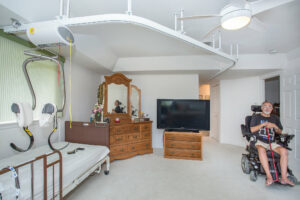
Enhancing Independence for Client’s with ALS: A Case Study on Ceiling Track Lift Systems
Introduction: Occupational therapy is pivotal in fostering independence among individuals with physical limitations, particularly in the realm

Introduction: Occupational therapy is pivotal in fostering independence among individuals with physical limitations, particularly in the realm
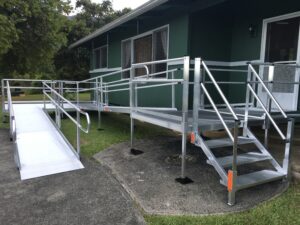
Abstract: Occupational therapists that specialize in accessibility play a critical role in promoting independence and improving the

In our twilight years, the home becomes more than just a place of comfort—it transforms into a
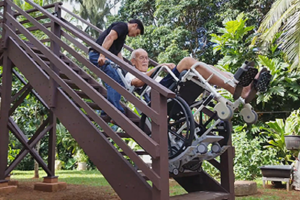
Ramps are some of the most common accessible home modifications requested. They support a variety of people

When it comes to accessible home modifications, deciding who to hire for the project is just as
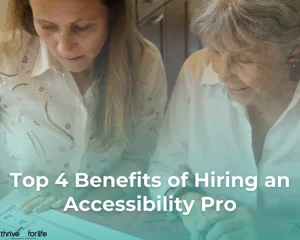
The road to making your home as accessible as possible is filled with red tape. Between insurance
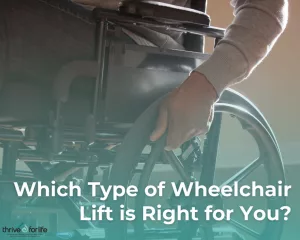
You love your home, and you want to live in it for as long as possible. But
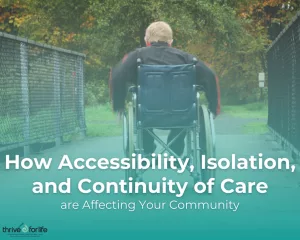
Approximately one in four Americans aged 65 and older are socially isolated (NAP). This isolation presents significant
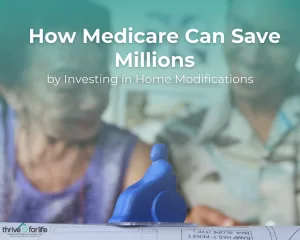
Accessible home modifications are an overlooked but extremely cost-effective way for Medicare to save millions of dollars
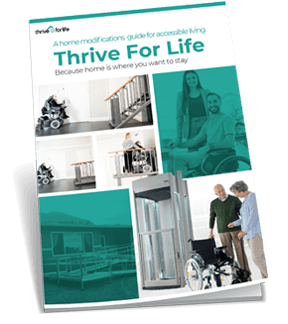
A home modifications guide for accessible living
Because home is where you want to stay

A home modifications guide for accessible living
Because home is where you want to stay
We only send awesome stuff!
Thrive for Life, LLC understands the importance of your personal privacy. Therefore, we have created this Privacy Policy so that you know how we use and disclose your information when you make it available to us. The Privacy Policy below discloses our practices regarding information collection and usage on website located at Accessibility Consultant | Thrive For Life | Honolulu Hawaii the related mobile website, and the mobile application, if applicable (collectively, the “Websites”) and the service provided thereon (the “Service”).
By using or accessing the Websites and the Service, you signify your agreement to be bound by this Privacy Policy. IF YOU DO NOT AGREE TO THIS PRIVACY POLICY YOU MAY NOT ACCESS OR OTHERWISE USE OUR SERVICE OR PARTICIPATE IN OUR SERVICES.
Key aspects of our privacy practices described in this Privacy Policy include the following explanations:
A. Personally Identifiable Information That We Collect:
We may ask you for, or you may voluntarily submit, personally identifiable information when you are using the Service. The personally identifiable information which you may provide to us could include, but is not limited to:
B. Why We Collect/Process Your Information
We generally process your information when we need to do so to fulfill a contractual obligation (for example, to process your subscription payments to use our platform), or where we or someone we work with needs to use your personal information for a reason related to their business (for example, to provide you with a service). European law calls these reasons “legitimate interests.” These “legitimate interests” include:
We only process personal information for these “legitimate interests” after considering the potential risks to your privacy—for example, by providing clear transparency into our privacy practices, offering you control over your personal information where appropriate, limiting the information we keep, limiting what we do with your information, who we send your information to, how long we keep your information, or the technical measures we use to protect your information.
One of the ways in which we are able to help merchants using our platform is by using techniques like “machine learning” (European law refers to this as “automated decision-making”) to help us improve our services. When we use machine learning, we either: (1) still have a human being involved in the process (and so are not fully automated); or (2) use machine learning in ways that don’t have significant privacy implications (for example, reordering how apps might appear when you visit an app store, our app, or our website).
C. Non-Personal or Aggregate Information That We Collect:
When you access our Service, we may automatically collect non-personally identifiable information from you, such as IP host address, web pages viewed, browser type, operating system, referring service, search information, device type, page views, usage and browsing habits on the Service and similar data. We may also aggregate demographic information collected from our users (such as the number of users in a particular geographical location) in a manner which does not identify any one individual. We may also aggregate information collected offline in connection with the Service, obtain non-personally identifiable information from third party sources and develop aggregate information by anonymizing previously collected personally identifiable information.
It is possible at times when collecting non-personally identifiable information through automatic means that we may unintentionally collect or receive personally identifiable information that is mixed in with the non-personally identifiable information. While we will make reasonable efforts to prevent such incidental data collection, the possibility still exists. If you believe that we have inadvertently collected your personal information, please notify us at admin@thriveforlife.com
D. Information Usage:
We will only use your personally identifiable information as described below, unless you have specifically consented to another type of use, either at the time the personally identifiable information is collected from you or through some other form of consent from you or notification to you:
Non-personally identifiable or aggregate information may be used by us for any purposes permitted by law and may be shared with any number of parties, provided that such information shall not specifically identify you.
E. Cookies and Similar Technologies:
“Cookies” are pieces of information that may be placed on your computer by a service for the purpose of facilitating and enhancing your communication and interaction with that service. Many services use cookies for these purposes. We may use cookies (and similar items such as clear gifs, web beacons, tags, etc.) on our Service to customize your visit and for other purposes to make your visit more convenient or to enable us to enhance our Service. We may also use and place cookies (and similar items) on your computer from our third party service providers in connection with the Service, such as an analytics provider that helps us manage and analyze Service usage, as described more fully below. In addition, our advertisers and business partners may set cookies and similar items on your computer when you use our Service. You may stop or restrict the placement of cookies on your computer or flush them from your browser by adjusting your web browser preferences, in which case you may still use our Service, but it may interfere with some of its functionality. Cookies and similar items are not used by us to automatically retrieve personally identifiable information from your computer without your knowledge.
If you delete your cookies, change browsers or use a different cookie, our cookie (or an opt-out cookie) may no longer work and you will have to reinput (or opt-out) again.
F. Analytics and Conversion Tracking:
We may use analytics services that use cookies, javascript and similar technologies to help us analyze how users use the Service. The information generated by these services about your use of the Service (including your IP address or a truncated version of your IP address) is transmitted to and stored by analytics service providers on their servers. Those service providers will use this information for the purpose of evaluating your, and other users’, use of the Service, compiling reports for us on website activity and providing other services relating to website activity and Internet usage.
We may collect information about your computer, including your IP address, operating system and browser type, for system administration and in order to create reports. This is statistical data about our users’ browsing actions and patterns, and does not identify any individual.
For example, we use cookies on our site for Google Analytics (the “Analytics Service”). The Analytics Service is a web-based analytics tool that helps website owners understand how visitors engage with their website. The Analytics Service customers can view a variety of reports about how visitors interact with their website so that they can improve it.
Like many services, the Analytics Service uses first-party cookies to track visitor interactions as in our case, where they are used to collect information about how visitors use our site. We then use the information to compile reports and to help us improve our site.
Cookies contain information that is transferred to your computer’s hard drive. These cookies are used to store information, such as the time that the current visit occurred, whether the visitor has been to the site before and what site referred the visitor to the web page.
The Analytics Service collects information anonymously. They report website trends without identifying individual visitors. You can opt out of the Analytics Service without affecting how you visit our site. For more information on opting out of being tracked by Google Analytics across all websites you use, visit https://tools.google.com/dlpage/gaoptout.
We may also use Google conversion tracking and/or similar services to help us understand your and other users’ use of the Service.
G. Automatically Collected Information:
When you access the Service or open one of our HTML emails, we may automatically record certain information from your system by using cookies and other types of tracking technologies. This “automatically collected” information may include Internet Protocol address (“IP Address”), a unique user ID, device type, device identifiers, browser types and language, referring and exit pages, platform type, version of software installed, system type, the content and pages that you access on the Service, the number of clicks, the amount of time spent on pages, the dates and times that you visit the Service, and other similar information. Depending on the law of your country of residence, your IP address may legally be considered personally identifiable information.
H. Security:
The security of your personally identifiable information is very important to us. When we collect your personally identifiable information online, we use reasonable efforts to protect it from unauthorized access. However, due to the inherent open nature of the Internet, we cannot guarantee that your personally identifiable information will be completely free from unauthorized access by third parties such as hackers and your use of our Service demonstrates your assumption of this risk. We have put in place reasonable physical, electronic, and managerial procedures to safeguard the information we collect. Only those employees who need access to your information in order to perform their duties are authorized to have access to your personally identifiable information. For more information on protecting your privacy, please visit www.ftc.gov/privacy.
Our teams work tirelessly to protect your information, and to ensure the security and integrity of our platform. From time to time we may enlist independent auditors to assess the security of our data storage and systems that process financial information. However, we all know that no method of transmission over the Internet, and method of electronic storage, can be 100% secure. This means we cannot guarantee the absolute security of your personal information
I. Your Disclosures in Blogs and Other Social Media:
You should be aware that personally identifiable information which you voluntarily include and transmit online on the Service or in a publicly accessible blog, chat room, social media platform or otherwise online, or that you share in an open forum such as an in-person panel or survey, may be viewed and used by others without any restrictions. We are unable to control such uses of your personally identifiable information, and by using the Service or any other online services you assume the risk that the personally identifiable information provided by you may be viewed and used by third parties for any number of purposes.
If you login to the Websites and/or Service through your Facebook account, connect to a third party service such as Facebook or Twitter through an icon or link on the Service or otherwise link your Thrive for Life account with a third party service, we may share the contents of your post and associated information (such as your user name, the fact that your connection originated from the Service, and other relevant usage and diagnostic information) with such third party. With your one-time consent, we may also send information about the content you watch and your activities on the Service to such third parties. Once such information is shared, the use of your information will be subject to that service’s privacy policy and this Privacy Policy will not apply.
We are an American company, but we work with and process data about individuals across the world. To operate our business, we may send your personal information outside of your state, province, or country, including to the United States. This data may be subject to the laws of the countries where we send it. When we send your information across borders, we take steps to protect your information, and we try to only send your information to countries that have strong data protection laws.
J. Protection for Children:
We generally do not collect personally identifiable information from children under the age of 13. If at any time in the future we plan to collect personally identifiable information from children under 13, such collection and use, to the extent applicable, shall, when required, be done in compliance with the Children’s Online Privacy Protection Act (“COPPA”) and appropriate consent from the child’s parent or guardian will be sought where required by COPPA. When we become aware that personally identifiable information from a child under 13 has been collected without such child’s parent or guardian’s consent, we will use all reasonable efforts to delete such information from our database.
K. Other Services:
As a convenience to you, we may provide links to third-party Services from within our Service. We are not responsible for the privacy practices or content of these third-party sites. When you link away from our Service, you do so at your own risk.
L. Changes to this Privacy Policy:
We reserve the right, at our discretion, to change, modify, add, or remove portions from this Privacy Policy at any time. However, if at any time in the future we plan to use personally identifiable information in a way that materially differs from this Privacy Policy, including sharing such information with more third parties, we will post such changes here and provide you the opportunity to opt-out of such differing uses. Your continued use of the Service and our services following the posting of any changes to this Privacy Policy means you accept such changes.
M. Opt-Out Process:
All unsubscribe or opt-out requests may be made by clicking the “unsubscribe” link at the bottom of the relevant email. We will process your request within a reasonable time after receipt. However, we are not responsible for, and in some cases we are incapable of, removing your personally identifiable information from the lists of any third party who has previously been provided your information in accordance with this Privacy Policy or your consent. You should contact such third parties directly. If you would like to update or correct any personally identifiable information that you have provided to us, please email us at admin@thriveforlife.com for www.thriveforlife.com and once we confirm your information, we will update such information within a reasonable amount of time.
N. Reserved
O. No Rights of Third Parties:
This Privacy Policy does not create rights enforceable by third parties, nor does it require disclosure of any personal information relating to users of the Service.
P. Your Rights Over Your Information
We believe you should be able to access and control your personal information no matter where you live. Depending on how you use our services, you may have the right to request access to, correct, amend, delete, port to another service provider, restrict, or object to certain uses of your personal information (for example, direct marketing). We will not charge you more or provide you with a different level of service if you exercise any of these rights.
If you utilize our platform and wish to exercise these rights over information about your transactions, you need to directly contact the party or parties you interacted with. We are only a processor on their behalf, and cannot decide how to process their information. As such, we can only forward your request to them to allow them to respond. We will of course help our members to fulfill these requests by giving them the tools to do so and by answering their questions.
Please note that if you send us a request relating to your personal information, we have to make sure that it is you before we can respond. In order to do so, we may ask to see documentation verifying your identity, which we will discard after verification.
If you would like to designate an authorized agent to exercise your rights for you, please email us from the email address we have on file for you. If you email us from a different email address, we cannot determine if the request is coming from you and will not be able to accommodate your request. In your email, please include the name and email address of your authorized agent.
If you are not happy with our response to a request, you can contact us to resolve the issue. You also have the right to contact your local data protection or privacy authority at any time.
Finally, because there is no common understanding about what a “Do Not Track” signal is supposed to mean, we don’t respond to those signals in any particular way.
Q. Site Terms of Use:
Use of this Service is governed by, and subject to, the Terms of Use located at [www.Thrive for Life.com] (the “Terms”). This Privacy Policy is incorporated into the Terms. Your use, or access, of the Service constitutes your agreement to be bound by these provisions. IF YOU DO NOT AGREE TO THE TERMS AND THIS PRIVACY POLICY YOU MAY NOT ACCESS OR OTHERWISE USE THE SERVICE.
R. Servers:
Our servers are maintained in the United States. By using the Service, you freely and specifically give us your consent to export your personally identifiable information to the United States and to store and use it in the United States as specified in this Privacy Policy. You understand that data stored in the United States may be subject to lawful requests by the courts or law enforcement authorities in the United States.
S. Governing Law:
This Privacy Policy and our legal obligations hereunder are subject to the laws of the State of Hawaii regardless of your location. You hereby consent to the exclusive jurisdiction of and venue in the courts located in the State of Hawaii, County of Honolulu, in all disputes arising out of or relating to the Services.
T. Contact:
For questions or concerns relating to privacy, we can be contacted at 1441 Kapiolani Blvd. Ste1114 #64015 Honolulu, HI 96814 or by way of e-mail at: admin@thriveforlife.com
U. Effective Date:
This Privacy Policy was last updated as of May 1, 2021.